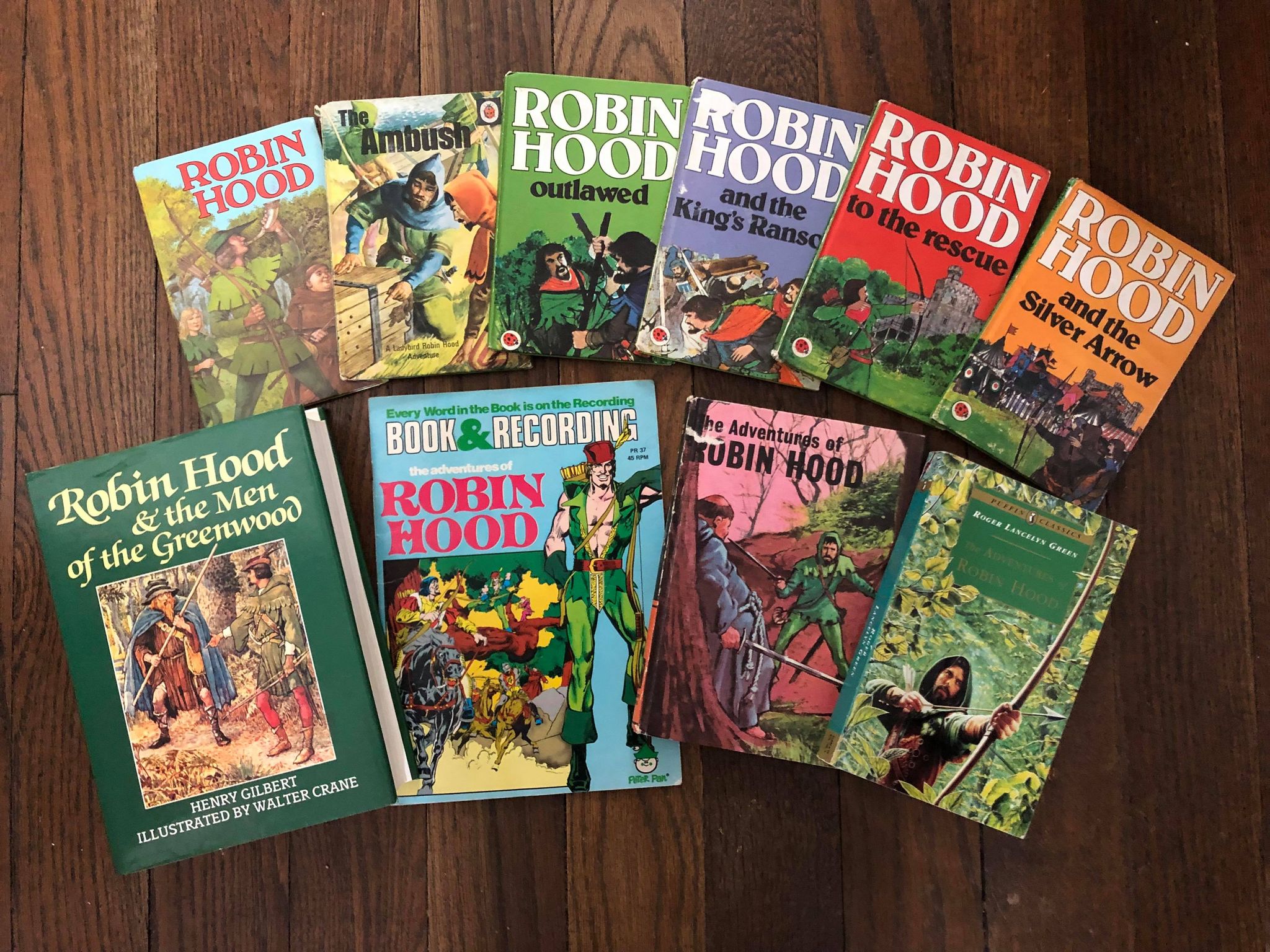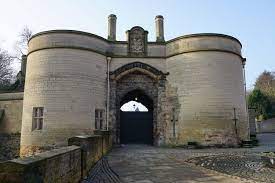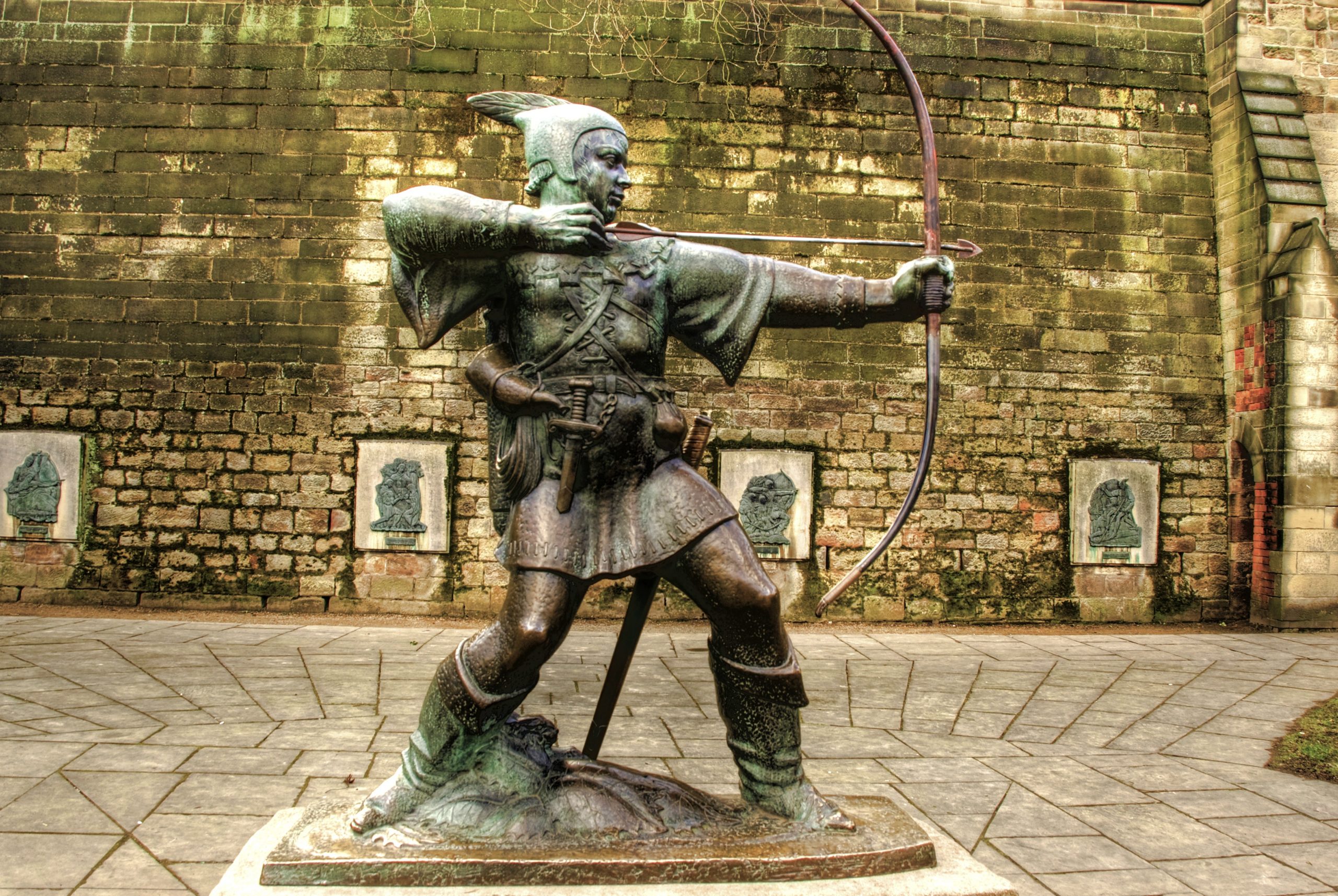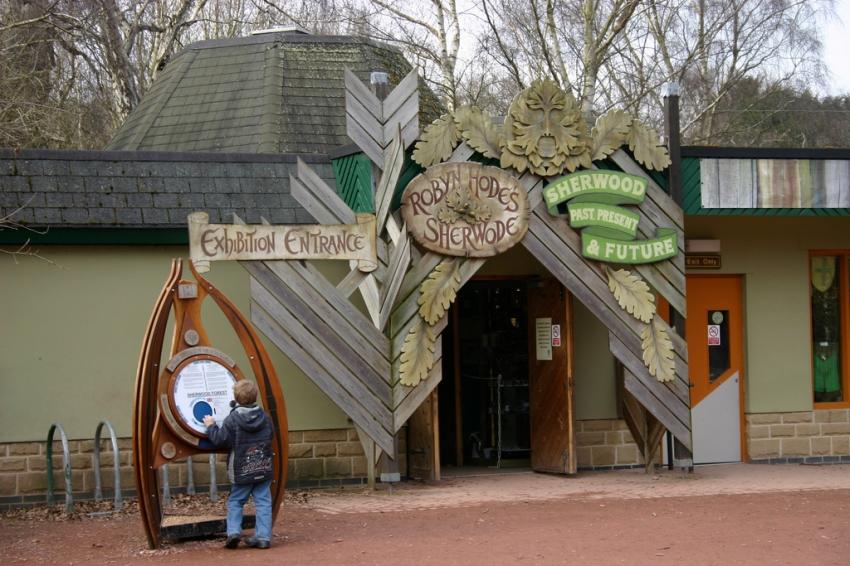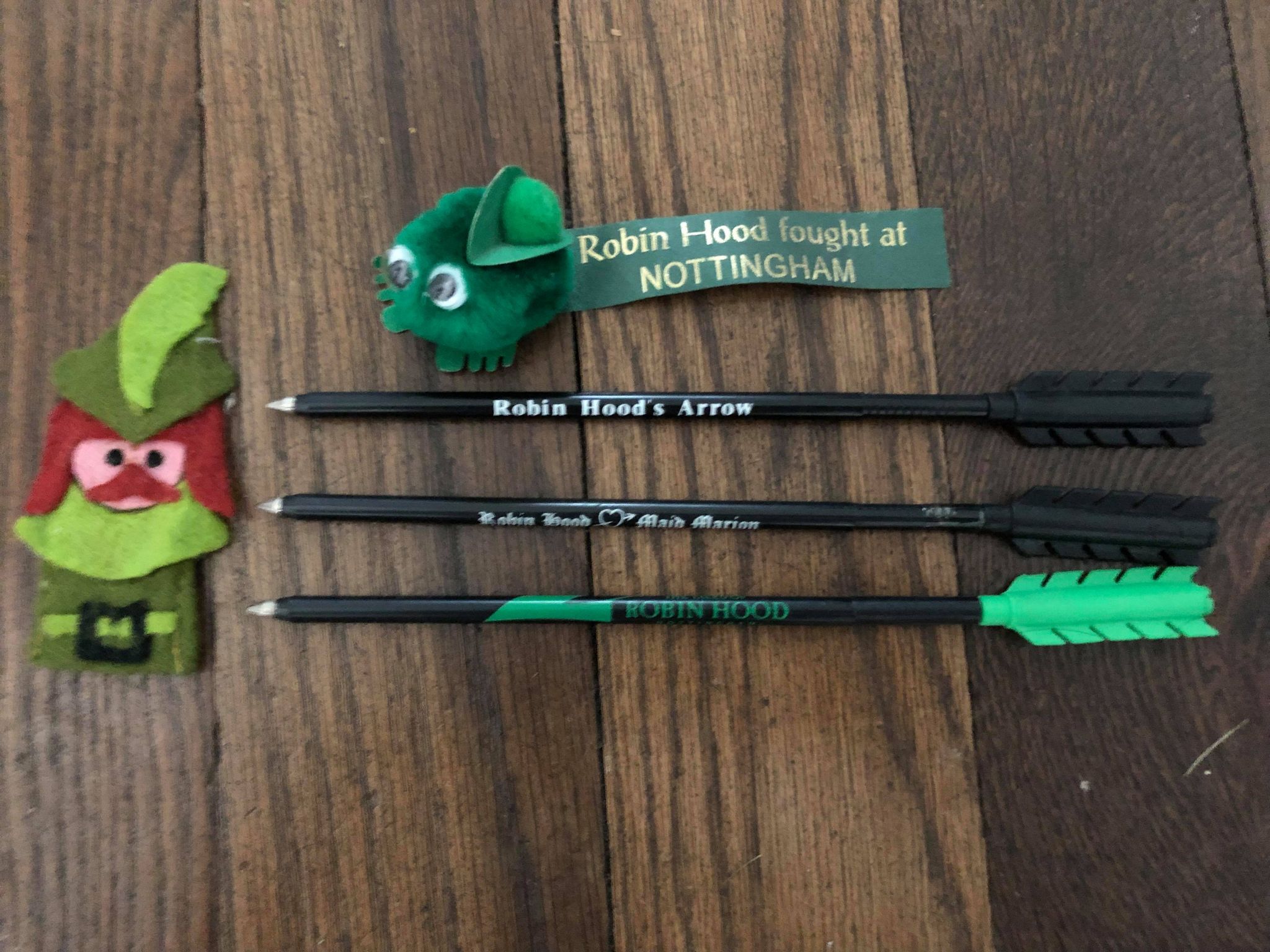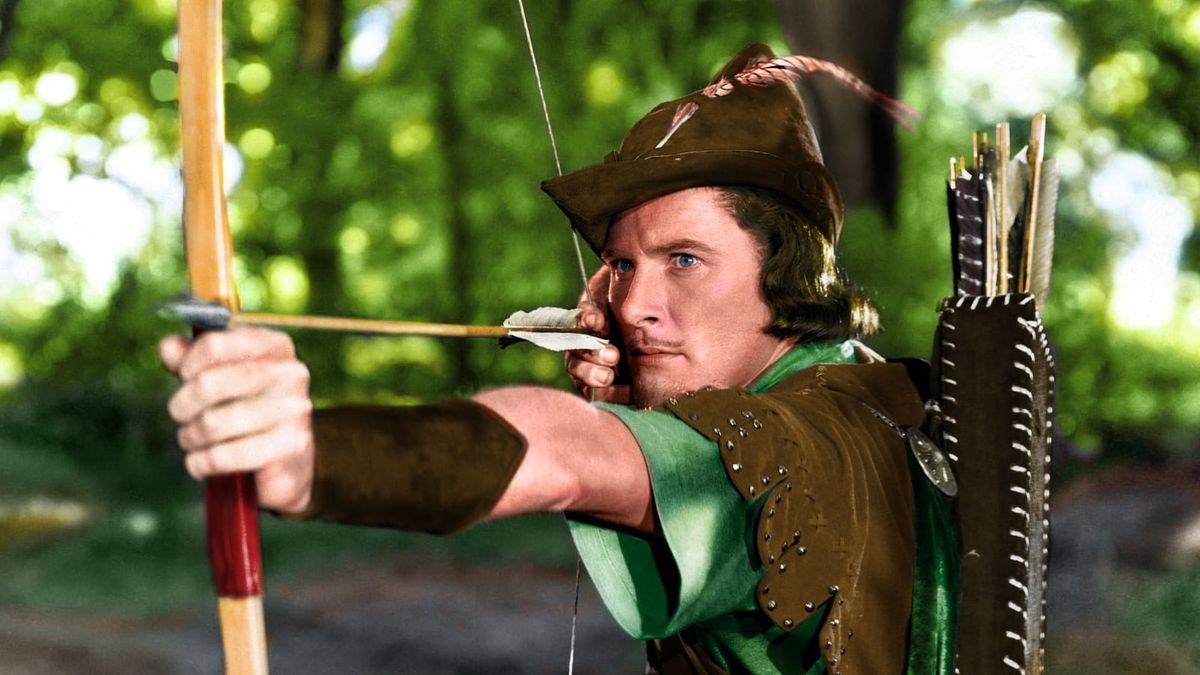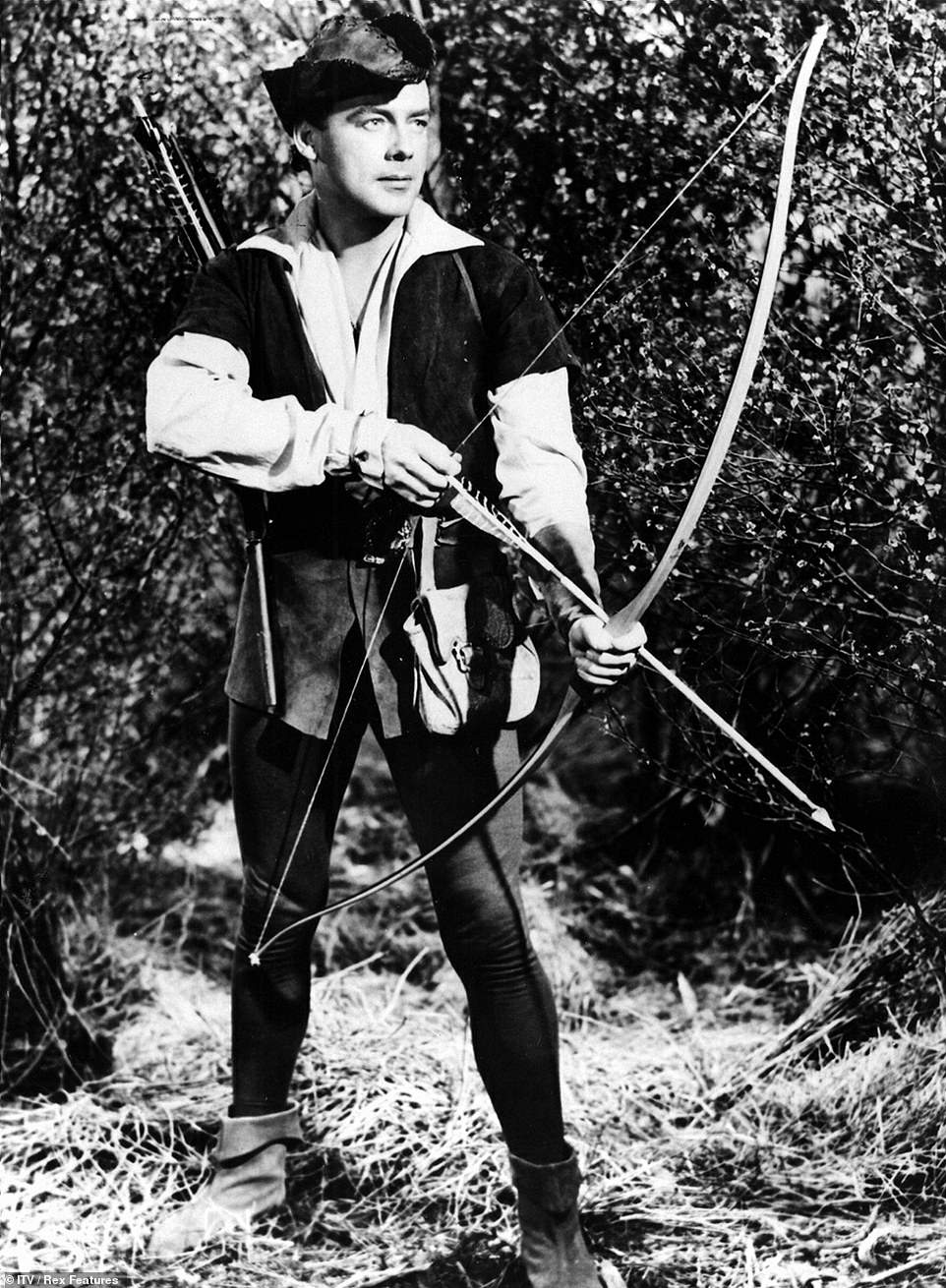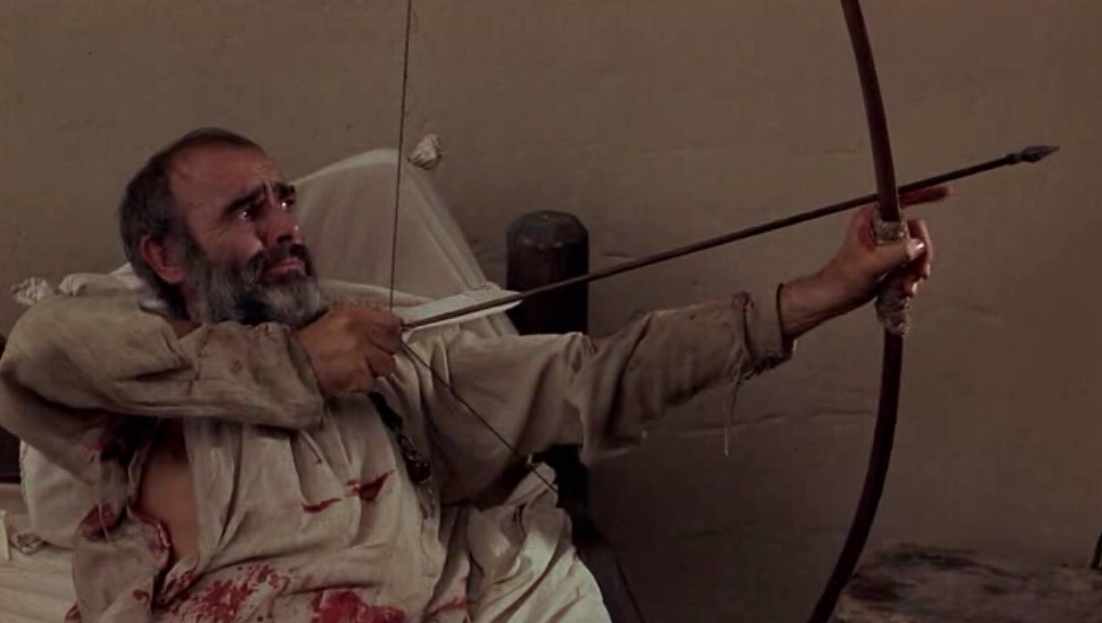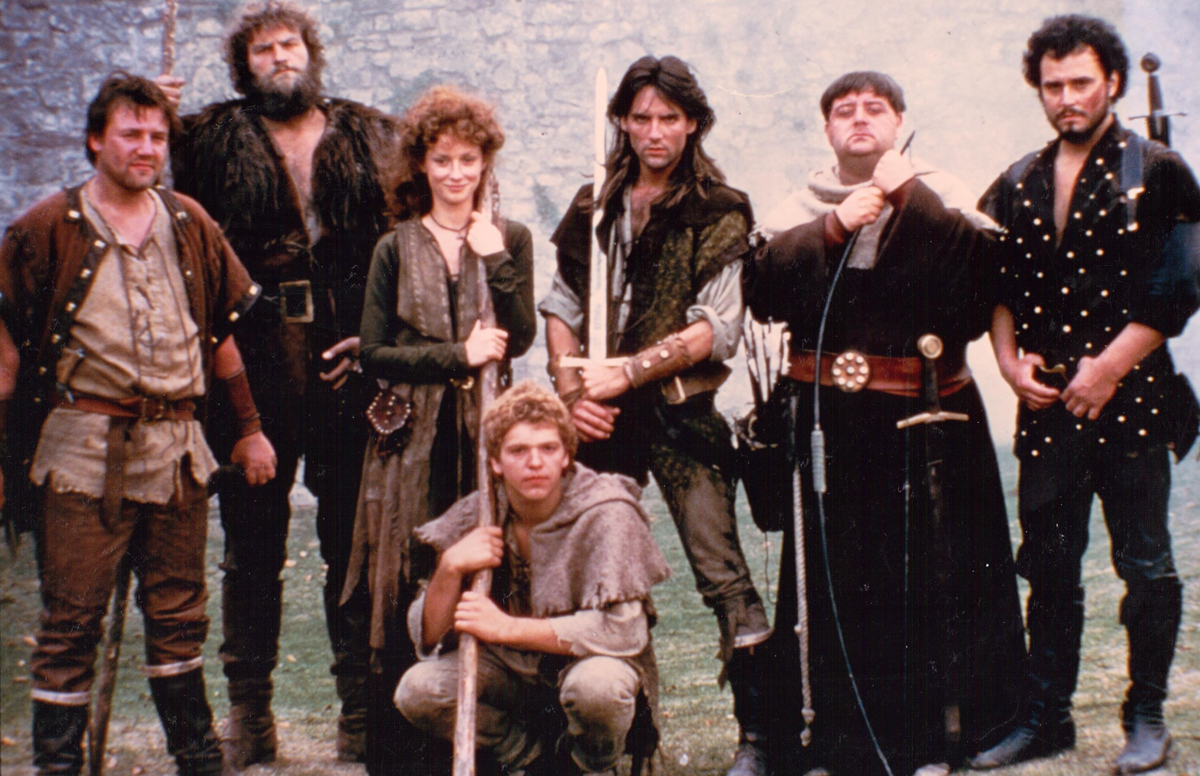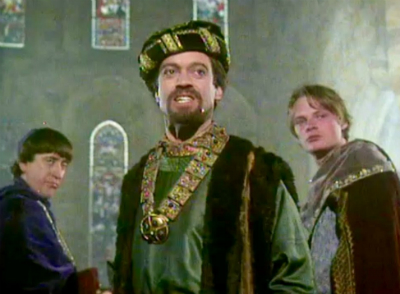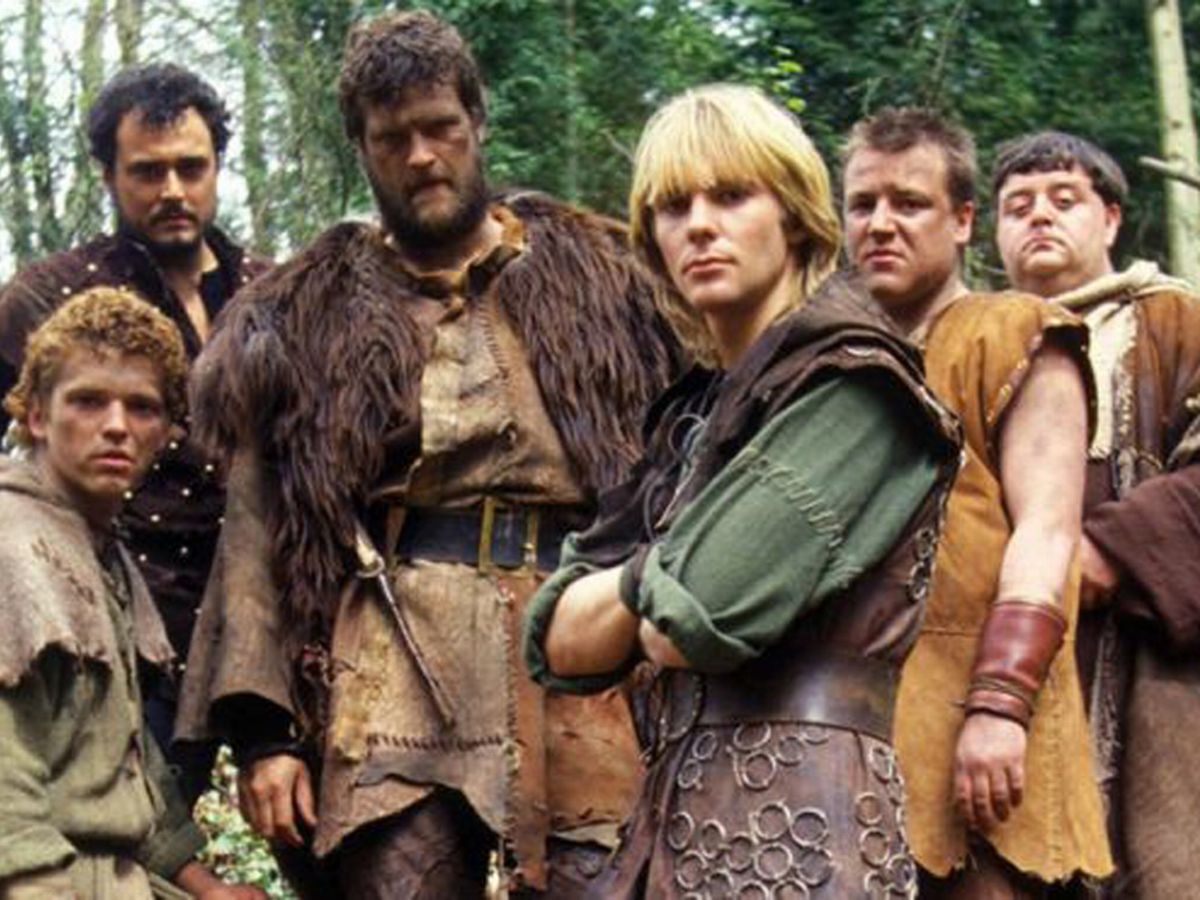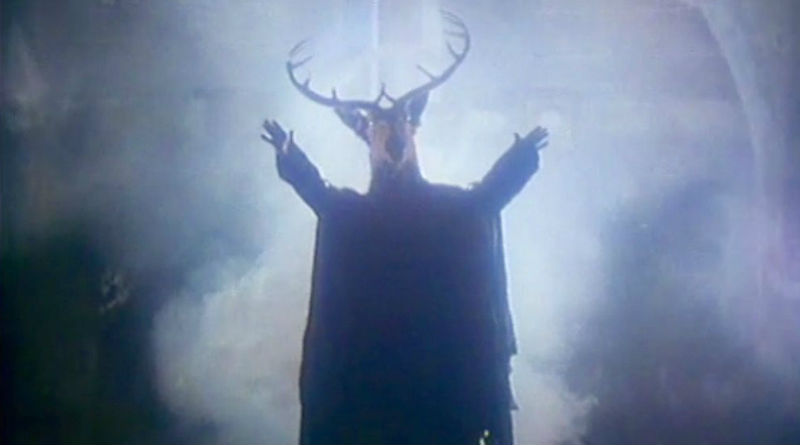“FEARED BY THE BAD! LOVED BY THE GOOD!”
Growing up with an internationally renowned local legend
Heroes have always figured quite significantly for me and none more so than Nottingham’s most famous son and outlaw; Robin Hood.
I cannot actually remember a time when I didn’t know that name or know the stories surrounding him and his band of Merry Men, but I suppose this shouldn’t be surprising as I grew up in Sherwood, Nottingham and have resided within an hour of most of the major places featured in the various ballads, books, TV series and films I’ve encountered throughout my life.
I have often wondered if I would have been such a devotee to the rogue of Sherwood Forest if I hadn’t have grown up in the area? The answer to that is that I will never know. However, one thing I am sure of is that I look forward to each new incarnation of or area’s legendary character with equal excitement and nervousness and have done so over these last five decades.
"NOTHING'S FORGOTTEN...NOTHING'S EVER FORGOTTEN."
My earliest memories of Robin Hood are from when I was at Primary School in the late 70s and early 80s and in particular a series of stories published by Ladybird Books based on the ballads and characters. These included: Robin Hood, Robin Hood and the Silver Arrow, Robin Hood Outlawed, Robin Hood to the Rescue, Robin Hood The Ambush, and Robin Hood and the King's Ransom. My parents always encouraged a love of reading, stories and history and these books were the start of my interest in the local hero. They gave me grounding in the main characters, the themes of stealing from the rich to give to the poor and standing up against tyranny and oppression, as well as an overview of major famous events retold from the ballads.
What also fuelled this interest was having Nottingham Castle on my doorstep and the statue of Robin (gifted to the city by local businessman, Philip E F Clay) that graces Robin Hood Lawn, in the remains of the moat on Castle Road. This was unveiled on the 24th July 1952; by the Duchess of Portland (coincidentally my birthday is 24-7-73 - spooky).
It’s a magnificent 7ft effigy that was cast in eight pieces of half-inch thick bronze (made to last 6,000 years) and weighs half a ton, standing on a two-and-a-half ton block of white Clipsham stone.
Surrounding it are small studies of Little John, Friar Tuck, Alan A Dale and Will Scarlett, whilst wall plaques illustrate scenes from the Merry Men’s adventures.
What I particularly love is that the point of the statue’s arrow is aimed at the castle gatehouse, reminding the public that Robin opposed the establishment within!
Visits to the castle were great as it meant that my brother and I could pretend we were outlaws attacking the Sheriff; if we went too far with the roleplay (often as not) we could always rely on our mum to jolt us back into the 20th Century and reality.
“NOW, THIS FOREST IS WIDE. IT CAN SHELTER AND CLOTHE AND FEED A BAND OF GOOD, DETERMINED MEN - GOOD SWORDSMEN, GOOD ARCHERS, GOOD FIGHTERS.”
The ultimate Robin Hood related day out was of course to Sherwood Forest. From where we lived it was a mere 30-minute drive and was the home of the outlaws.
A visitor’s centre had been opened in 1977 that was themed around the legendary figure and included an indoor walkthrough telling the story of Robin and his Merry Men. This had sounds of the forest and the characters, music, information about the period that related to the legend and ballads, full-size mock-ups/dummies of the characters and scenarios, interactive quizzes and ended with the golden arrow and Robin’s final resting place.
There was also a shop that was stacked full of Robin Hood related toys, books and gifts. I dread to think how many bows and arrows and feathered RH Lincoln green hats my parents bought for us over the years and how many trees with holes in we tried to hide in.
Also near the centre and car parks were “Automatic Outlaw” machines. These were basically repurposed car-parking ticket dispensers which, for 20p, issued a sticker with a hand drawn style character from the Robin Hood stories. Characters were given randomly which urged you to try and collect a full set of the Merry Men. The usual suspects could be found and I have vague recollections that this included: Robin, Maid Marian, Little John, Friar Tuck, Will Scarlet, Alan A Dale, and the Sheriff of Nottingham. We never did get a complete collection despite trying each time we visited.
The attraction sadly closed in 2016 to be replaced by the new RSPB owned centre (which opened in 2018). The only remaining part of the original is the statue of Little John and Robin’s famous fight with quarterstaffs on the log straddling the running river. I have to say even though I am a supporter of the RSPB’s work, as impressive as the new building is, and as environmentally friendly as it is, it does not match the feeling that the original invoked. The links to the outlaw aren’t as obvious and I can’t help but think that is a shame for children wanting to find out more about Hood in the surrounding that he once walked.
Robin and John Statue Pic
The natural centre-piece to the forest is the world-famous Major Oak, the biggest oak tree in Britain. It’s thought to be between 800 and 1,000 years old, weighs an estimated 23 tonnes, and has a girth of 10 metres (33ft) with a canopy that reaches a huge 28 metres (92ft).
Even as an adult it is a humbling and awe inspiring sight. When I was a child it was the place that the outlaws used as a meeting place, a base of operations and as a hiding place from their enemies. It still amazes me that people were allowed to have their photographs taken in the tree many decades ago (my parents remember standing in it.) Sadly the tree has been victim to vandalism and the footfall of so many tourists on the roots has meant the tree is now fenced off with supports holding its mighty boughs.
“WHY THERE ISN'T A POOR SAXON IN ALL OF NOTTINGHAMSHIRE
THAT DOESN'T KNOW AND BLESS SIR ROBIN OF LOCKSLEY.”
It was this immersion in the history of the area and the legend that fired my imagination but it was also how Hood was portrayed in film and TV that secured my love of the hero and his exploits. My earliest encounter with the son of Sherwood on film was Errol Flynn’s performance in 1938’s The Adventures of Robin Hood.
It is a perfect introduction to the character. All of the elements of the saga are contained within its 102 minutes and I remember watching it one Sunday afternoon when I was around three years old and being enthralled. Action-packed, swashbuckling, over the top villains, daring sword fights, the characters are all present and correct, and Flynn set the standard for any actor wanting to fill Hood’s green tights for many years to come.
Other films that reinforced this image, for me, were 1960’s The Sword of Sherwood Forest with Richard Greene reprising his much-loved TV role (my parents had always held him up as their favourite Robin and although it is only recently that I’ve watched the series I have always known the lyrics to Dick James’ theme song thanks to my parents singing it and a children’s songs cassette I had called “All Aboard” which featured it.), 1967’s A Challenge for Robin Hood starring Barrie Ingham, 1952’s The Story of Robin Hood, produced by Walt Disney Productions and RKO Radio Pictures, starring Richard Todd as Robin Hood, Joan Rice as Maid Marian and Peter Finch as the Sheriff of Nottingham, and of course Disney’s 1973 animated movie with animals – I can’t honestly say I have never liked this version as I have never been a massive fan of singing animals, maybe I am just a Hood snob?
Another great turn for the outlaw was in Terry Gilliam’s 1981 fantasy adventure film Time Bandits which featured the brilliant John Cleese playing a very posh, prim, proper and fey Hood who is surrounded by extremely rough and ready Merry Men, of clearly dubious morals.
We hired the film out on VHS from the local video rental shop back in 1984 (back in the days before Blockbusters existed in the UK) and it was great to see the local legend make a cameo. It is always a delight for me to see the character make a surprise appearance in a show or film and there have been some that have stayed in my memory (more of that later!)
This was the architype of the legend that I had in my mind for many years until two things shifted this. The first was watching 1976’s Robin and Marian starring Sean Connery as Robin, Audrey Hepburn as Maid Marian, Nichol Williamson as Little John, Ronnie Barker as Friar Tuck and Robert Shaw as the Sheriff of Nottingham. The realistic sets and costumes, the earthy, rugged feel of the film, seeing the outlaws in their older years, and witnessing Robin’s death for the first time on film (with Connery speaking the lines that I had already known from the books and the visitor’s centre: “Give me my bow... Where this falls, John, Put us close, and leave us there...”) really altered my perception and emotional understanding of the story.
The second, and the one that was a game-changer for me, was a certain TV series that hit our screens in 1984.
"HE'S COMING... THE HOODED MAN IS COMING."
Robin of Sherwood was a must-watch Saturday teatime viewing in our house. Created by Richard Carpenter, it was produced by HTV in association with Goldcrest and ran for three series over 26 episodes. It began at 6pm on Saturday 28th April, the last weekend of the Easter holidays and the beginning of my final term of primary school; I can remember tuning into the first feature length show having rushed from my grandparents’ house to our own home to watch it, only just making it back in time (bizarrely the BBC were showing The Dukes of Hazzard in the 5pm slot before it, in which Waylon Jenning’s theme song contains the line "Fightin' the system like two modern-day Robin Hoods." – this was up against Whizz Kids on ITV and they both vied for our attention).
Fortunately Robin of Sherwood didn’t clash with another show, and it didn’t disappoint. This adaptation combined that same gritty, authentic production design with elements of real-life history, 20th century fiction, and pagan myth.
I’ve rewatched the entire run recently, and have thoroughly enjoyed it once more. Whereas some components I didn’t quite grasp as a child, as an adult I can fully appreciate the mystical, shamanistic and pagan story elements that combine with the more traditional action and folklore. It is still, without doubt, my favourite interpretation of the legend; and its innovation and influence can clearly be seen in other versions of the myth that followed.
The casting is perfect and benefits from being younger than in previous incarnations. Michael Praed as Robin of Locksley in series one and two was the youngest actor to play the role at this point. And what a great hooded man he is. He is equally as at ease playing emotional, straight scenes as he is with more humorous moments. Praed is certainly a physical actor, and he handles fight scenes and a bow very well. It isn’t difficult to see why men wanted to be him and women wanted to be with him.
Nickolas Grace plays a very different sheriff than we have seen in previous films and TV. He is scheming, he is vain, he is oddly aloof with no interest in seemingly any person he encounters and he is prone to outburst of anger that are incredibly unjustified and over minor things in many cases.
For me the rest of the cast play what I consider definitive versions of the outlaws:
Judi Trott is convincing as Lady Marion of Leaford, equally clever, witty, and caring but manages to show fragility and strength.
Peter Llewellyn Williams’ Much grows over the three series.
Ray Winstone plays a hot-headed, shoot first and ask questions later Will Scarlet who really shows his physical presence as an actor.
Clive Mantle’s Little John is played as a man of two distinct contrasts – his hulking figure and strength at odds with his very soft heart and he seems to be the one who holds together the outlaws.
The brilliant Phil Rose embodies Friar Tuck (possibly born to play this part), and is able to show off his acting range, be it wise, funny, resolute, conflicted or considerate.
Completing the gang is Mark Ryan as Saracen assassin Nasir (a character I loved as a child), a fierce, loyal supporter who joins the crew having found respect for Robin during a crucial sword fight. Ryan is understated, and believable, in the role.
The late Robert Addie’s portrayal of Sir Guy of Gisburne as "a warrior and not a courtier" makes for interesting conflict with the Sheriff (who he resents). Again, Addie is another actor who is able to showcase his great range across the series.
“IT'S ALWAYS ROBIN HOOD... ROBIN HOOD.
ANYONE WOULD THINK HE WAS THE ONLY WOLFSHEAD IN SHERWOOD!”
Special kudos must be given to Jason Connery for his Robert of Huntingdon. For me playing Robin is daunting for any actor especially as comparisons will always be made against other portrayals, but Connery not only had father Sean to be held up to but also had to fill Praed’s shoes. It must’ve been like being the next Doctor Who!
I don’t know if it is case of me being fickle as a 12 year old or the fact the changeover was done so well, nevertheless I completely accepted Connery in the role and controversially preferred him back then. I do think that he handles a bow really well and he is involved in very physical fight scenes that look exhausting. Do I prefer one Robin over the other as an adult? No, I really like both depictions on their own merits.
The show does reflect the time in which it was produced (especially with a couple of the hairstyles!) but it holds up incredibly well. I would go as far as saying that where the BBC series made in 2006 already can be dated, Robin of Sherwood is pretty timeless in its production values and attention to period detail. Having Ian Sharp direct each episode in the first series really set the tone and the style and ultimately shaped the show.
Carpenter’s addition of fantasy elements to the story, including Robin's supernatural mentor Herne the Hunter (played by John Abineri), his magic sword called Albion, and the outlaws battling against black magicians and demons as well as the Sheriff and his henchmen set a precedent for future productions. As a 10 year old watching the show it was noticeably different and felt like this was exactly as the legend would have been. It only served to encourage my love for the local myth even further.
The music which was composed and performed by Irish folk group Clannad, is haunting and dramatic and was also key for making the show so atmospheric. The original soundtrack, Legend, was released in 1984 and won the BAFTA award for Best Original Television Music. I am sure it is yet another reason that I began playing folk music as an adult, and I had the pleasure of seeing the group perform a suite of music from the series on their recent farewell tour.
"EACH MAN TRAVELS ALONG ONE PATH AND AT THE END OF IT –
IF HE HAS THE COURAGE - HE WILL MEET HIMSELF AND KNOW HIS POWER."
The series concluded in 1986 with the two part story The Time of the Wolf. I remember thinking that it would be back the following year and certainly and it seems that a plan was in place for a fourth series; unfortunately it was not to be as Goldcrest’s financial difficulties prevented further episodes. Superbly written, acted and produced, for me it is still the definitive modern version of the Robin Hood legend.
It would be another three years until an alternative interpretation burst onto the small-screen and a further five until our favourite outlaw made a triumphant return to the big-screen.
But that is a ballad for part the second!
Deinde usque ad tempus
Gary





